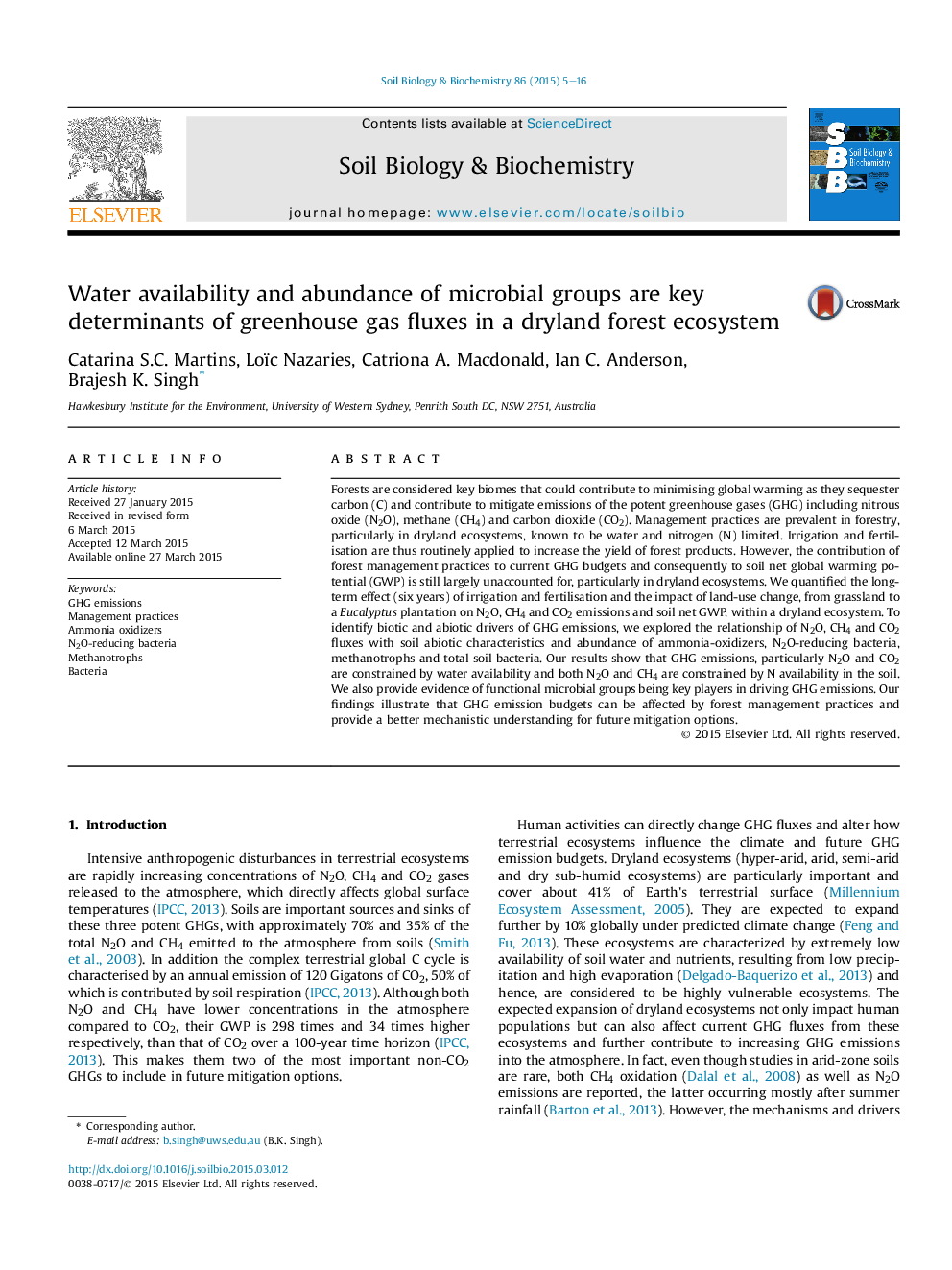| Article ID | Journal | Published Year | Pages | File Type |
|---|---|---|---|---|
| 2024515 | Soil Biology and Biochemistry | 2015 | 12 Pages |
•Forest management practices affect greenhouse gas emissions in a dryland forest ecosystem.•N2O and CO2 fluxes were constrained by water availability.•N2O and CH4 fluxes were further constrained by N availability.•Functional microbial groups were strong predictors of GHG emissions.
Forests are considered key biomes that could contribute to minimising global warming as they sequester carbon (C) and contribute to mitigate emissions of the potent greenhouse gases (GHG) including nitrous oxide (N2O), methane (CH4) and carbon dioxide (CO2). Management practices are prevalent in forestry, particularly in dryland ecosystems, known to be water and nitrogen (N) limited. Irrigation and fertilisation are thus routinely applied to increase the yield of forest products. However, the contribution of forest management practices to current GHG budgets and consequently to soil net global warming potential (GWP) is still largely unaccounted for, particularly in dryland ecosystems. We quantified the long-term effect (six years) of irrigation and fertilisation and the impact of land-use change, from grassland to a Eucalyptus plantation on N2O, CH4 and CO2 emissions and soil net GWP, within a dryland ecosystem. To identify biotic and abiotic drivers of GHG emissions, we explored the relationship of N2O, CH4 and CO2 fluxes with soil abiotic characteristics and abundance of ammonia-oxidizers, N2O-reducing bacteria, methanotrophs and total soil bacteria. Our results show that GHG emissions, particularly N2O and CO2 are constrained by water availability and both N2O and CH4 are constrained by N availability in the soil. We also provide evidence of functional microbial groups being key players in driving GHG emissions. Our findings illustrate that GHG emission budgets can be affected by forest management practices and provide a better mechanistic understanding for future mitigation options.
